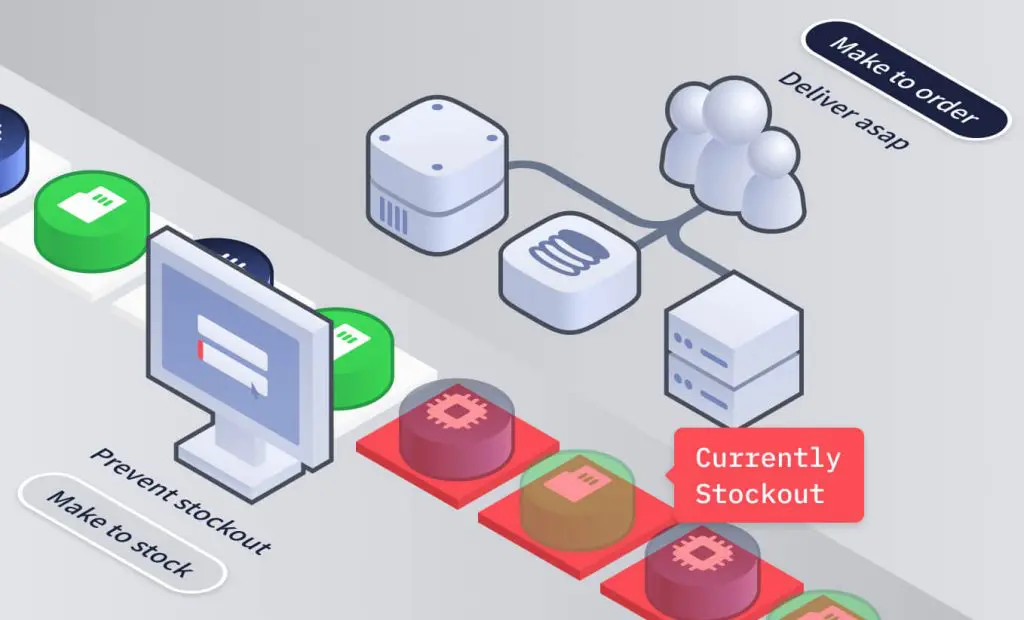Supply chain management (SCM) encompasses the comprehensive oversight and coordination of all activities involved in procuring raw materials, transforming them into finished products, and distributing those products to customers. Effective SCM is critical for businesses as it directly impacts operational efficiency, cost optimisation, and customer satisfaction, ultimately determining a company’s competitiveness and profitability. Best practices in SCM refer to the proven strategies, methodologies, and processes that have demonstrated success in enhancing supply chain performance and achieving organizational goals. By adopting these best practices, companies can streamline their operations, reduce waste, and improve overall supply chain resilience. This article delves into strategic, operational, and sustainable best practices, providing insights and actionable recommendations for supply chain leaders. In the following sections, we will explore strategic best practices that align with long-term business objectives, operational best practices that optimize day-to-day execution, and sustainable practices that promote environmental responsibility while maintaining economic performance. By implementing these best practices, organizations can unlock the full potential of their supply chains, driving efficiency, innovation, and competitive advantage.
Strategic Best Practices in Supply Chain Management
Strategic best practices in supply chain management refer to the overarching principles and frameworks that guide decision-making and long-term planning. These practices are designed to align supply chain strategies with the company’s broader business goals, enabling organizations to achieve sustainable competitive advantage and operational excellence. The importance of aligning strategic supply chain initiatives with the company’s overall objectives cannot be overstated. This alignment ensures that supply chain operations directly support and contribute to the realization of the organization’s vision, mission, and strategic priorities. By fostering this synergy, companies can optimize resource allocation, enhance cross-functional collaboration, and consistently deliver value to customers. The key areas that will be explored in this section include aligning supply chain strategy with business goals, adopting lean management principles, and leveraging technology to enhance strategic decision-making and execution.
Aligning Supply Chain Strategy with Business Goals
Integrating supply chain objectives with overarching business targets is a critical best practice that enables organizations to leverage their supply chains as a strategic asset. This alignment ensures that supply chain initiatives are prioritized and executed in a manner that directly supports the company’s overall strategic direction. For example, if a company’s primary goal is to achieve market leadership through product innovation, the supply chain strategy should focus on enabling rapid prototyping, sourcing cutting-edge materials, and ensuring agile production capabilities. Alternatively, if cost leadership is the primary objective, the supply chain strategy might prioritize lean manufacturing, supplier consolidation, and optimized logistics networks. Companies that have successfully aligned their supply chain strategies with business goals have consistently outperformed their competitors. Apple Inc., for instance, has leveraged its supply chain excellence to support its goal of delivering innovative and premium products to customers. By closely integrating its product development and supply chain strategies, Apple can rapidly source components, manage inventory, and distribute new products globally, maintaining its competitive edge.
Adopting Lean Management Principles
Lean management principles have revolutionized supply chain operations, emphasizing the elimination of waste, continuous improvement, and the creation of value for customers. By adopting lean techniques, organizations can streamline their supply chains, reduce costs, and enhance overall efficiency. Let us take a more in-depth look at the core principles of lean management in supply chain operations. The first is Value Stream Mapping, which involves the identification and optimization of the activities that directly contribute value to the customer while eliminating non-value-adding steps. Next is Just-In-Time (JIT) Production. Through this process, excess inventory and associated costs can be minimized by producing goods only when needed. Continuous Improvement (Kaizen) emphasizes the fostering of a culture of incremental improvements through employee empowerment and problem-solving. Finally, Pull-Based Systems allow for the reduction of overproduction and inventory costs by producing goods based on customer demand rather than forecasts. Companies that have successfully implemented lean management principles in their supply chains have reported significant improvements in operational efficiency, lead time reduction, and customer satisfaction. Toyota’s renowned Toyota Production System (TPS) is a prime example of lean manufacturing principles in action, enabling the company to achieve unparalleled efficiency and quality in its automotive supply chain.
Role of Technology in Enhancing Strategy
 Emerging technologies are transforming the landscape of strategic supply chain management, enabling organizations to optimize visibility, streamline decision-making, and gain a competitive edge. By leveraging advanced technologies, companies can unlock new opportunities for innovation, efficiency, and customer value creation. Artificial Intelligence (AI) and Machine Learning (ML) are playing a pivotal role in supply chain optimization. These technologies enable predictive analytics, demand forecasting, and automated decision-making processes, reducing the risk of human error and improving responsiveness to market dynamics. The Internet of Things (IoT) and sensor networks are revolutionizing supply chain visibility, allowing real-time tracking of goods, assets, and environmental conditions throughout the supply chain. This enhanced visibility enables proactive decision-making, inventory optimization, and rapid response to disruptions. Furthermore, blockchain technology has the potential to revolutionize supply chain transparency and security. By creating an immutable and decentralized ledger, blockchain can improve traceability, prevent counterfeiting, and facilitate secure data sharing among supply chain partners. While the adoption of these technologies presents challenges, such as data integration, cybersecurity risks, and change management, the potential benefits are significant. Companies that successfully navigate these challenges and embrace technology as a strategic enabler will be well-positioned to gain a competitive advantage in the rapidly evolving supply chain landscape.
Emerging technologies are transforming the landscape of strategic supply chain management, enabling organizations to optimize visibility, streamline decision-making, and gain a competitive edge. By leveraging advanced technologies, companies can unlock new opportunities for innovation, efficiency, and customer value creation. Artificial Intelligence (AI) and Machine Learning (ML) are playing a pivotal role in supply chain optimization. These technologies enable predictive analytics, demand forecasting, and automated decision-making processes, reducing the risk of human error and improving responsiveness to market dynamics. The Internet of Things (IoT) and sensor networks are revolutionizing supply chain visibility, allowing real-time tracking of goods, assets, and environmental conditions throughout the supply chain. This enhanced visibility enables proactive decision-making, inventory optimization, and rapid response to disruptions. Furthermore, blockchain technology has the potential to revolutionize supply chain transparency and security. By creating an immutable and decentralized ledger, blockchain can improve traceability, prevent counterfeiting, and facilitate secure data sharing among supply chain partners. While the adoption of these technologies presents challenges, such as data integration, cybersecurity risks, and change management, the potential benefits are significant. Companies that successfully navigate these challenges and embrace technology as a strategic enabler will be well-positioned to gain a competitive advantage in the rapidly evolving supply chain landscape.
Operational Best Practices for Enhancing Efficiency
Operational best practices in supply chain management focus on the day-to-day execution of activities, processes, and procedures that directly impact efficiency, cost optimization, and customer satisfaction. These practices are closely tied to the operational performance of the supply chain, ensuring that strategic goals are effectively translated into tangible results. By implementing operational best practices, organizations can streamline their supply chain operations, reduce waste, and enhance overall productivity. These practices encompass various aspects of supply chain management, including inventory management, demand forecasting, supplier relationship management, logistics and distribution strategies, and the utilization of automation and emerging technologies. In the following sections, we will explore specific operational best practices that have proven instrumental in enhancing supply chain efficiency and driving business performance.
Inventory Management Techniques
Below is a list of some of the most effective inventory management techniques in our database to-date. It is important, however, to assess what might best suit your business, its functions, and its needs:
Effective inventory management is a cornerstone of operational excellence in supply chain management. By implementing best practices such as Just-in-Time (JIT) inventory systems, Economic Order Quantity (EOQ) models, and ABC analysis, organizations can optimize their inventory levels, reduce carrying costs, and improve cash flow.
JIT inventory systems aim to minimize excess inventory by synchronizing material flow with production schedules. This approach reduces the need for excessive safety stocks and associated storage costs while ensuring the timely availability of materials when needed.
The EOQ model helps organizations determine the optimal order quantity that balances ordering and holding costs, minimizing the total inventory-related expenses.
ABC analysis categorizes inventory items based on their value and consumption rates, allowing companies to prioritize and manage their inventory more effectively. High-value or high-consumption items (Category A) receive closer monitoring and tighter control, while lower-value or less frequently used items (Categories B and C) are managed with less stringent policies.
Software tools and inventory management systems play a crucial role in optimizing inventory levels and tracking stock movements. These tools use advanced algorithms and real-time data to provide visibility, generate reports, and recommend optimal reorder points and quantities.
By implementing these inventory management best practices, organizations can improve their cash flow, reduce storage costs, and minimize the risk of stockouts or excess inventory, ultimately enhancing overall supply chain efficiency.
Demand Forecasting and Planning
Accurate demand forecasting and effective planning are essential for aligning supply chain operations with customer demand, minimizing stockouts or excess inventory, and optimizing resource allocation. Various forecasting models and techniques are employed, each with its own strengths and suitability for different scenarios. Accurate demand forecasting and planning not only improve inventory management but also impact various other supply chain functions, such as production scheduling, procurement, and transportation planning. By adopting best practices in this area, organizations can enhance their responsiveness to customer needs, reduce costs associated with excess inventory or missed sales opportunities, and ultimately improve overall supply chain performance.
Time-series forecasting models, such as moving averages and exponential smoothing, use historical demand patterns to project future demand. These models are particularly useful for products with stable and predictable demand patterns. Causal or explanatory models, like regression analysis, incorporate external factors such as promotional activities, economic conditions, and consumer trends to improve forecast accuracy. These models are well-suited for products with demand patterns influenced by multiple variables. We also have advanced forecasting techniques, like machine learning and artificial intelligence. These analyze vast amounts of data from diverse sources to identify complex patterns and provide more accurate demand projections. Effective demand planning integrates these forecasting models with market intelligence, historical data, and collaborative input from cross-functional teams. By aligning demand planning with sales and operations planning (S&OP) processes, organizations can synchronize their supply chain activities with anticipated demand, minimizing stockouts or excess inventory.
Supplier Relationship Management
Building strong and collaborative relationships with suppliers is a critical best practice in supply chain management. Effective supplier relationship management (SRM) enables organizations to develop mutually beneficial partnerships with their suppliers, fostering trust, collaboration, and continuous improvement. There are a number of key best practices in SRM. Let us have a look at them:
Supplier Evaluation and Selection involves establishing a rigorous process for evaluating and selecting suppliers based on criteria such as quality, delivery performance, cost competitiveness, and alignment with the company’s values and sustainability goals.
Performance Management allows for the implementation of systems to monitor and measure supplier performance against predefined metrics, such as on-time delivery, quality levels, and responsiveness to feedback or issues.
Collaborative Communication ensures that open lines of communication are maintained with suppliers, sharing forecasts, requirements, and feedback to facilitate seamless coordination and continuous improvement.
Strategic Partnerships encompasses the identification and cultivation of strategic partnerships with key suppliers that demonstrate a commitment to long-term collaboration, innovation, and shared growth.
By adopting these best practices, organizations can mitigate supply chain risks, ensure consistent quality and delivery, leverage supplier expertise, and drive cost savings through collaborative initiatives.
Companies like Toyota and Walmart have successfully implemented robust SRM programs, fostering long-term partnerships with their suppliers and leveraging their expertise to improve product design, manufacturing processes, and logistics operations.
Effective Logistics and Distribution Strategies
Logistics and distribution strategies play a pivotal role in ensuring the efficient and timely movement of goods throughout the supply chain. Best practices in this area focus on optimizing transportation modes, warehousing operations, and distribution network design to enhance customer service and reduce costs. We would also recommend Transportation Mode Selection, which includes evaluating and selecting the most appropriate transportation modes (e.g., road, rail, air, or maritime) based on factors such as speed, cost, reliability, and environmental impact. Multi-modal transportation solutions, which combine different modes, can offer flexibility and cost savings. Warehousing and Distribution Center Management focuses on the implementation of lean principles and automation in warehousing operations to streamline processes, reduce errors, and improve inventory accuracy. Cross-docking techniques can minimize handling and storage requirements, facilitating direct transfer between inbound and outbound transportation. Network Design and Optimization involves strategically locating distribution centers and warehouses to minimize total transportation costs and lead times while ensuring efficient coverage of target markets. Advanced modeling and optimization techniques can aid in identifying the optimal network configuration. Ultimately, by adopting these best practices in logistics and distribution, companies ensure enhanced customer satisfaction through reliable and timely deliveries. Transportation and inventory carrying costs are also reduced and the overall supply chain agility and responsiveness are improved.
Utilizing Automation and Robotics
The integration of automation and robotics in supply chain operations has gained significant momentum, driven by the pursuit of increased efficiency, accuracy, and productivity. Automation can be applied to various stages of the supply chain, from warehousing and material handling to transportation and last-mile delivery.
In warehousing operations, automated storage and retrieval systems (AS/RS), automated guided vehicles (AGVs), and robotic picking and sorting systems can significantly improve throughput, reduce errors, and enhance worker safety. In transportation, autonomous trucks and drones are being explored for long-haul and last-mile deliveries, respectively, with the potential to reduce labor costs, improve route optimization, and enhance delivery speed and reliability. While the upfront costs of automation can be substantial, the long-term benefits often outweigh the initial investment. Organizations should conduct thorough cost-benefit analyses and carefully evaluate the suitability of automation solutions for their specific operations and requirements. Companies like Amazon and DHL have successfully implemented extensive automation in their fulfillment centers and logistics operations, leveraging robotics and AI to streamline processes, reduce errors, and enhance overall operational efficiency.
Impact of AI and Blockchain on Supply Chains
Artificial Intelligence (AI) and blockchain technology are disrupting traditional supply chain practices, offering unprecedented opportunities for optimization, transparency, and security. They are being leveraged for predictive analytics, enabling more accurate demand forecasting, inventory optimization, and proactive maintenance of assets and equipment. AI-powered automation is also driving efficiencies in areas such as route planning, warehouse operations, and real-time supply chain monitoring. Blockchain technology, with its decentralized and immutable ledger, has the potential to revolutionize supply chain transparency and traceability. By creating a shared, tamper-proof record of transactions and events, blockchain can enhance visibility across the entire supply chain, enabling better tracking of products from source to consumer. Additionally, blockchain can facilitate secure and transparent sharing of data among supply chain partners, streamlining processes such as payments, customs clearance, and contractual agreements. This increased transparency and trust can lead to stronger collaboration, reduced risks of counterfeiting, and improved compliance with regulations and standards. Companies like Walmart, IBM, and Maersk have successfully piloted blockchain-based supply chain solutions, demonstrating the technology’s potential for improving traceability, reducing disputes, and enhancing overall efficiency. While challenges such as scalability, interoperability, and regulatory frameworks need to be addressed, the impact of AI and blockchain on supply chains is undeniable, and early adopters stand to gain significant competitive advantages.
IoT and Big Data Analytics for Monitoring and Decision Making
The Internet of Things (IoT) and big data analytics are revolutionizing supply chain monitoring and decision-making processes. By leveraging IoT devices and sensors, organizations can gain real-time visibility into the movement of goods, environmental conditions, and asset performance throughout the supply chain. IoT sensors can track variables such as temperature, humidity, location, and shock or vibration, providing valuable data for optimizing transportation routes, maintaining product quality, and identifying potential disruptions or inefficiencies.
Big data analytics techniques can process and analyze the vast amounts of data generated by IoT devices, enabling organizations to derive actionable insights and make data-driven decisions. Advanced analytics can identify patterns, predict demand fluctuations, optimize inventory levels, and support proactive maintenance and risk mitigation strategies. For example, IoT-enabled cold chain monitoring can ensure that temperature-sensitive products like pharmaceuticals and perishable foods maintain their integrity throughout the supply chain. Real-time data from IoT sensors can trigger alerts or adjustments in transportation routes or storage conditions to prevent spoilage or quality issues. Companies like UPS and DHL have successfully implemented IoT and big data analytics solutions in their supply chain operations, improving asset utilization, reducing losses, and enhancing overall supply chain visibility and responsiveness.
Sustainability Practices in Supply Chain Management
In today’s environmentally conscious market, sustainable supply chain management has become a strategic imperative for organizations. Consumers, regulators, and stakeholders are increasingly demanding that companies demonstrate responsibility and accountability for their environmental and social impacts throughout the supply chain. Integrating sustainability into core business strategies not only aligns with societal expectations but also offers tangible benefits for organizations. Sustainable practices can reduce operational costs, enhance brand reputation, improve compliance with regulations, and foster long-term resilience and competitiveness. In this section, we will explore best practices in promoting green logistics, ethical sourcing, and reducing the carbon footprint of supply chain operations.
Promoting Sustainable Practices and Green Logistics
 Green logistics focuses on minimizing the environmental impact of transportation and distribution activities within the supply chain. To help make our impact on the world and its ecosystems, we believe that it is totally imperative to discuss some of the key best practices in this area. Your company could look into adopting alternative fuel vehicles, such as electric or hybrid trucks, can significantly reduce greenhouse gas emissions and improve air quality, particularly in urban areas with stringent emissions regulations. Empty miles can be minimized and fuel consumption reduced by implementing optimized routing and load consolidation. This is enabled with the use of advanced routing and load optimization software. Additionally, we recommend that businesses should further look at introducing sustainable packaging. They should explore eco-friendly packaging materials and strategies, such as using recyclable or biodegradable materials, minimizing excessive packaging, and implementing take-back programs for reusable containers. There might be an opportunity for a modal shift and businesses should evaluate the feasibility of shifting freight transportation from road to more environmentally friendly modes, such as rail or intermodal solutions, where appropriate. Leading logistics companies like UPS, FedEx, and DHL have made significant investments in sustainable logistics practices, including alternative fuel vehicles, optimized routing, and sustainable packaging initiatives, demonstrating their commitment to reducing their environmental footprint.
Green logistics focuses on minimizing the environmental impact of transportation and distribution activities within the supply chain. To help make our impact on the world and its ecosystems, we believe that it is totally imperative to discuss some of the key best practices in this area. Your company could look into adopting alternative fuel vehicles, such as electric or hybrid trucks, can significantly reduce greenhouse gas emissions and improve air quality, particularly in urban areas with stringent emissions regulations. Empty miles can be minimized and fuel consumption reduced by implementing optimized routing and load consolidation. This is enabled with the use of advanced routing and load optimization software. Additionally, we recommend that businesses should further look at introducing sustainable packaging. They should explore eco-friendly packaging materials and strategies, such as using recyclable or biodegradable materials, minimizing excessive packaging, and implementing take-back programs for reusable containers. There might be an opportunity for a modal shift and businesses should evaluate the feasibility of shifting freight transportation from road to more environmentally friendly modes, such as rail or intermodal solutions, where appropriate. Leading logistics companies like UPS, FedEx, and DHL have made significant investments in sustainable logistics practices, including alternative fuel vehicles, optimized routing, and sustainable packaging initiatives, demonstrating their commitment to reducing their environmental footprint.
Ethical Sourcing and Reducing Carbon Footprint
Ethical sourcing involves procuring materials and products from suppliers that adhere to strict environmental, social, and ethical standards. This practice not only aligns with corporate social responsibility goals but also mitigates risks associated with non-compliance, worker exploitation, and negative public perception. The supplier code of conduct should set out clear expectations and guidelines for suppliers regarding labor practices, environmental regulations, anti-corruption policies, and human rights standards. Regular supplier audits and monitoring are very important components to ensure compliance with the established code of conduct and identify areas for improvement. Sustainable material selection can be guaranteed by prioritizing the use of eco-friendly, recycled, or certified materials in product manufacturing, packaging, and distribution. Companies should look into reducing their carbon footprint through different initiatives. They should look at implementing strategies to reduce the carbon footprint of supply chain operations, such as supply chain redesign, energy-efficient facilities, and renewable energy sourcing.
Companies like Patagonia, Ikea, and Levi Strauss & Co. have been leaders in ethical sourcing and carbon footprint reduction initiatives. Patagonia’s rigorous auditing process ensures that its suppliers meet stringent environmental and labor standards, while Ikea has implemented ambitious goals to become a circular and climate-positive business by 2030. Levi Strauss & Co. has invested in sustainable cotton farming initiatives and water recycling in its supply chain to reduce its environmental impact. By adopting ethical sourcing practices and implementing carbon footprint reduction strategies, organizations can not only enhance their brand reputation and stakeholder trust but also contribute to a more sustainable and responsible supply chain ecosystem.
Read more on supply chain sustainability in our dedicated article.
Risk Management in Supply Chains
Supply chains are inherently vulnerable to various risks, ranging from operational disruptions and natural disasters to geopolitical instability and cyber threats. Effective risk management is crucial for maintaining supply chain stability, reliability, and resilience, ultimately safeguarding an organization’s ability to consistently meet customer demands and achieve business objectives. Proactive risk management not only protects companies from potential losses but also ensures smoother operations and faster recovery times in the face of disruptions. By identifying, assessing, and mitigating risks, organizations can make informed decisions, allocate resources effectively, and develop contingency plans to minimize the impact of unforeseen events. In this section, we will explore best practices for assessing risks, developing mitigation strategies, and leveraging insurance as a risk management tool in supply chain operations. Read our article on supply chain analysis to learn more.
Assessing Risks and Developing Mitigation Strategies
The first step in effective risk management is identifying and assessing the various risks that can impact the supply chain. These risks can be broadly categorized into operational risks, external risks, and strategic risks. Operational risks include risks related to quality issues, production breakdowns, labor disputes, IT system failures, and transportation disruptions, among others. There are also external risks. These encompass factors beyond the organization’s direct control, such as natural disasters, political instability, trade disputes, and regulatory changes. Strategic risks stem from strategic decisions or changes in the business environment, such as mergers and acquisitions, new market entries, or shifts in consumer preferences.
Once potential risks have been identified, organizations should conduct thorough risk assessments to evaluate the likelihood and potential impact of each risk. This process often involves techniques like risk mapping, scenario analysis, and quantitative risk modeling. Based on the risk assessment, organizations can develop mitigation strategies and contingency plans tailored to specific risks. There are a number of strategies that may be implemented. Supply disruptions may be mitigated by introducing supplier diversification and redundancy. Robust quality control measures and process monitoring could be implemented and alternative transportation routes and modes may be developed. Further strategies would be to invest in backup systems and disaster recovery plans and the establishment of crisis management teams and communication protocols. Regular review and updating of risk assessments and mitigation plans are essential to ensure their continued effectiveness in the face of evolving risks and changing business environments.
Role of Insurance in Managing Supply Chain Risks
While proactive risk management is crucial, organizations can also leverage insurance as a risk transfer mechanism to protect against various supply chain vulnerabilities. Insurance can provide financial protection and aid in business continuity in the event of disruptions or losses. Supply Chain Insurance, for one, covers losses and liabilities arising from disruptions in the supply chain, such as supplier failures, transportation delays, or production interruptions. Cargo Insurance protects against losses or damages to goods during transportation, covering risks like theft, accidents, and natural disasters. Next on our list is Cyber Insurance. In the digital age we find ourselves in, Cyber Insurance has become a necessity due to the increasing reliance on digital systems and data in supply chain operations. Cyber Insurance can provide coverage for losses resulting from cyber attacks, data breaches, or system failures. Business Interruption Insurance covers lost income and additional expenses incurred due to disruptions in business operations, including those caused by supply chain disruptions. By incorporating appropriate insurance policies into their risk management strategies, organizations can mitigate the financial impact of supply chain disruptions and facilitate faster recovery and business continuity. Case studies from past disruptions, such as the 2011 Tōhoku earthquake and tsunami in Japan, have highlighted the critical role insurance played in enabling companies to resume operations and minimize losses.
Building Resilient Supply Chains
The concept of supply chain resilience has gained significant prominence in recent years, driven by the increasing frequency and severity of disruptions caused by natural disasters, geopolitical conflicts, cyber threats, and global health crises like the COVID-19 pandemic. A resilient supply chain is characterized by its ability to anticipate, withstand, and rapidly recover from disruptions, ensuring continuity of operations and minimizing the impact on customers and stakeholders. Building resilience in supply chains requires a multi-faceted approach that emphasizes flexibility, adaptability, and robustness. It involves proactively identifying vulnerabilities, implementing risk mitigation strategies, and fostering a culture of continuous improvement and learning.
Read our case study on how one business recovered rapidly from the effects of the pandemic with Intuendi AI demand planning.
Enhancing Flexibility, Adaptability, and Resilience
Flexibility and adaptability are crucial components of supply chain resilience, enabling organizations to quickly respond and adjust to changes in demand, supply, or operational conditions. The risk of disruptions impacting a single source or location can be overcome by diversifying the supply base. This is made possible by maintaining a diverse network of suppliers across multiple geographic regions. Implementing agile manufacturing principles, such as modular production lines and flexible workforce arrangements, can enable rapid shifts in production volumes or product mixes to accommodate changing demand patterns. Businesses should also consider leveraging supply chain digitization. Investing in digital technologies like IoT, AI, and blockchain can improve supply chain visibility, enable real-time monitoring, and facilitate faster decision-making and adaptation to disruptions. Rapid information-sharing, problem-solving, and coordinated responses to disruptions are enabled by fostering cross-functional collaboration and open communication among supply chain partners.
It is crucial to provide a safety net and enable continuity of operations during disruptions. This can be done by establishing redundancy and backup plans, and, in so doing, maintaining redundant capacity, inventory buffers, and backup logistics Companies like Amazon and Toyota have demonstrated remarkable supply chain resilience by leveraging strategies such as diversified sourcing, modular production lines, and robust backup systems, enabling them to navigate disruptions more effectively than their competitors.
Learning from Past Disruptions
Analyzing past supply chain disruptions and extracting valuable lessons can significantly enhance an organization’s preparedness and resilience for future events. By studying the root causes, impacts, and responses to previous disruptions, companies can identify areas for improvement and implement proactive measures to mitigate similar risks. By carefully analyzing past events, organizations can extract valuable lessons, refine their risk management strategies, and implement best practices to enhance the resilience of their supply chains. Case studies from events like the 2011 Thailand floods, the 2010 Icelandic volcanic eruption, and the COVID-19 pandemic offer valuable insights into the vulnerabilities exposed, the effectiveness of risk mitigation strategies, and the best practices that enabled organizations to recover and adapt successfully.
There are a number of key lessons learned from past disruptions. One of these is the importance of supply chain visibility. Organizations with robust supply chain visibility and monitoring capabilities were better equipped to detect and respond to disruptions in a timely manner. Companies that fostered strong relationships and open communication with their suppliers were also on the forefoot as they were able to coordinate more effectively during disruptions and implement collaborative solutions. This highlights the value of supplier collaboration. The need for scenario planning also proved to be crucial. Organizations that had proactively developed contingency plans and conducted scenario analyses were better prepared to implement alternative strategies and mitigate the impacts of disruptions. The significance of supply chain resilience should also not be overlooked. Companies that had invested in building resilience through diversification, redundancy, and flexibility were able to recover more quickly and maintain business continuity during disruptions.
Final Recommendations for Supply Chain Leaders
Throughout this article, we have explored a comprehensive range of best practices in supply chain management, spanning strategic alignment, operational efficiency, sustainability, risk management, and resilience. By implementing these best practices, supply chain leaders can unlock significant value for their organizations, driving competitive advantage, cost optimization, and customer satisfaction. To summarize, let us briefly mention some key recommendations for supply chain leaders:
Align supply chain strategies with overall business goals and ensure that supply chain initiatives and investments directly support and contribute to the organization’s overarching objectives and long-term vision. Be sure to embrace lean principles and continuous improvement, aiding in fostering a culture of continuous improvement. Waste reduction, through lean management principles and eco-conscious practices, is also highly advised to implement across the supply chain. Leverage technology as a strategic enabler! Do not be afraid to invest in emerging technologies like AI, IoT, and blockchain to enhance supply chain visibility, decision-making, and optimization capabilities. Optimize inventory management and demand forecasting, helping to enhance risk mitigation and strengthen your resilience against times of struggle. Foster a culture of data-driven decision-making – leverage IoT, big data analytics, and real-time monitoring to gain insights and make informed decisions across the supply chain. Embrace a mindset of continuous adaptation and innovation, staying attuned to changing market dynamics, customer needs, and emerging best practices. And lastly, promote cross-functional collaboration. This means encouraging open communication and collaboration among cross-functional teams, fostering a holistic approach to supply chain management, and leveraging diverse expertise.
Supply chain management is a dynamic and ever-evolving discipline, constantly shaped by technological advancements, changing consumer expectations, and global market forces. To remain competitive and resilient, supply chain leaders must embrace a mindset of continuous learning and adaptation, staying abreast of emerging trends and best practices. By implementing the strategies and recommendations outlined in this article, organizations can unlock the full potential of their supply chains, driving efficiency, sustainability, and long-term success in an increasingly complex and interconnected global marketplace.
Learn how Intuendi AI can assist both with short-term replenishment and with mid to long-term planning in our free eBook.






